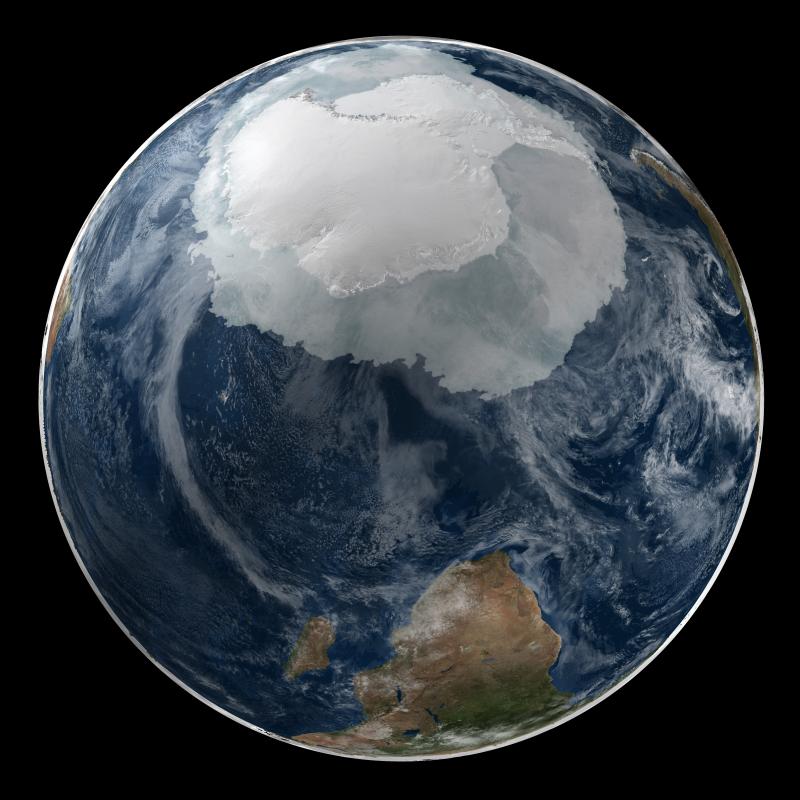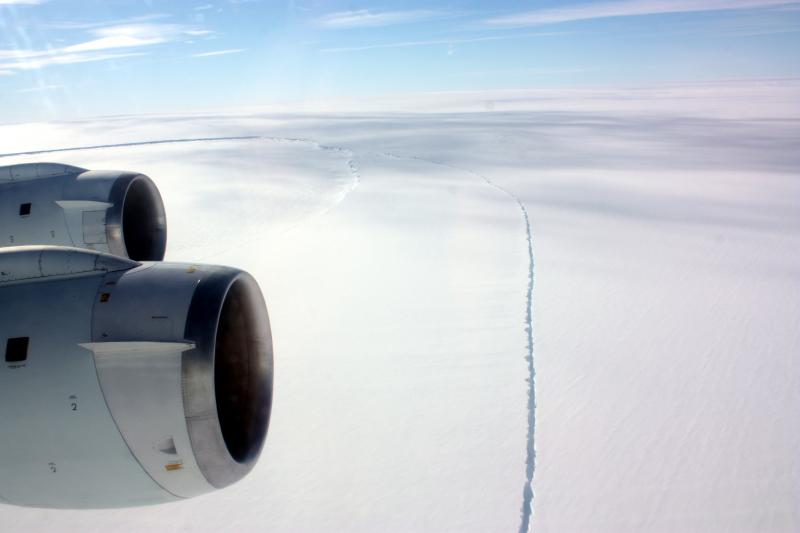One of the reasons that climate science is so difficult to effectively communicate is because it’s so data rich, and real data is messy. Like, super messy. I once did an experiment that involved running goats on treadmills. The goats had strain gauges attached to their legs so that I could measure relative amounts of different types of stress on the bones as the goats ran. I was expecting the data to match the idealized patterns I had seen in a book. They didn’t. They were a total mess. That’s when I learned that data pulled from the real world is not in any way, ideal.
In my experiment, there was just a goat and a treadmill. Climate scientists have to  contend with an entire planetary system. There are a zillion variables to feed into models that try to capture the behavior of the atmosphere, the oceans, winds, currents, orbits, tilts…and those are just the natural variables. These projections also take into account various likely scenarios of population growth, economic growth, fossil fuel consumption, and on and on. All of this information is fed into a model and used to make projections of what will happen in the next 5, 10, 25, 100 years. I don’t even know what I’m going to eat for breakfast tomorrow and yet these scientists are giving us detailed projections of what surface temperatures are likely to be in various locations around the planet by 2100.
contend with an entire planetary system. There are a zillion variables to feed into models that try to capture the behavior of the atmosphere, the oceans, winds, currents, orbits, tilts…and those are just the natural variables. These projections also take into account various likely scenarios of population growth, economic growth, fossil fuel consumption, and on and on. All of this information is fed into a model and used to make projections of what will happen in the next 5, 10, 25, 100 years. I don’t even know what I’m going to eat for breakfast tomorrow and yet these scientists are giving us detailed projections of what surface temperatures are likely to be in various locations around the planet by 2100.
It’s amazing, rigorous, and completely scientific work. And yet, because misconceptions about climate and science persist (in part due to the carefully orchestrated actions of some influential players), scientists have to get in the papers and get on the radio and get on to TV to explain why we had a cold February in New England.
 And thus, there was some furor in the media when it was reported last week that Antarctica was set to break a record this month—not a record for high temperatures or shrinking ice, but for the greatest extent of sea ice. That’s right—more sea ice in Antarctica than ever this month! As one would predict, those in the anti-science camp had some fun. This story of increasing Antarctic ice is not new; this is actually the third year in a row that it has broken records, which generates glee among those who cherry pick evidence. (Note, I could provide links, but I don’t want to give them any attention—it’s like how the camera pulls away when someone runs onto the field during a sporting match—I’m not going to do these guys any favors.)
And thus, there was some furor in the media when it was reported last week that Antarctica was set to break a record this month—not a record for high temperatures or shrinking ice, but for the greatest extent of sea ice. That’s right—more sea ice in Antarctica than ever this month! As one would predict, those in the anti-science camp had some fun. This story of increasing Antarctic ice is not new; this is actually the third year in a row that it has broken records, which generates glee among those who cherry pick evidence. (Note, I could provide links, but I don’t want to give them any attention—it’s like how the camera pulls away when someone runs onto the field during a sporting match—I’m not going to do these guys any favors.)
There were many articles out there that provided rational “no, it doesn’t mean that Earth isn’t warming” accounts of this data. My favorite, however, came from Slate writer Eric Holthaus, who wrote about this seeming contradiction concisely, clearly, and calmly.
Holthaus first distinguishes between land ice and sea ice, writing, “Since sea ice floats in the ocean, its growth or melt doesn’t affect global sea levels. Antarctic land ice, on the other hand, does contribute to sea level rise, and it’s losing volume at a record pace.” Antarctica is setting a record for sea ice, so right away, Holthaus has grounded us: this doesn’t affect sea level rise either way and the land ice is still disappearing. Check and check.
Then, he introduces the anomaly. In the Arctic, sea ice has been declining in recent years, while Antarctic sea ice has been increasing over that same period, though at a fraction of the pace. (The Arctic is losing ice at a rate of about 4 percent per decade while the Antarctic is gaining at less than 1 percent per decade.)
From here, Holthaus goes into the various hypotheses that scientists have proposed to explain this seemingly unexpected bit of data: melting land ice or an increase in precipitation lowers the salinity of ocean water making it easier for sea ice to form, or (and this is the hypothesis favored by most of the scientists I read about) stronger than usual winds push ice away from the continental shelf and new ice fills in the gaps.
It is in the concluding paragraphs, however, that Holthaus earned his “well said!” Here, he explains that, well, real data is messy:
“The reality is probably some combination of the above [hypotheses]. After all, there’s still a lot of legitimate debate among scientists on this topic. The Intergovernmental Panel on Climate Change, the leading global authority on climate change science, admitted as much in its latest report, which was released last year. New evidence shows the Antarctic sea ice trend itself may have been overestimated because of a statistical fluke.”
To be crystal clear: the legitimate debate among scientists is not, as some would pretend, about whether or not human activities are altering the climate system and heating the planet, but rather about how some of the complex interactions occur and what their implications might be.
Projections aren’t perfect because the data isn’t idealized. This is the planet, not a vacuum, and this seemingly odd bit of data about increased sea ice in the Southern Ocean does not mean that the scientists are wrong or hapless or completely befuddled—it just means that Earth’s interactions are complex and often non-linear. My messy goat data didn’t mean that the basic principles of bone tension and compression were wrong—it just meant that there was something else going on that I hadn’t figured out yet*.

But—and this is the most important part—climate scientists have already figured out that the Earth is heating due to human activities. This phenomenon in the Southern Ocean does not negate the overall trends or projections of global change. In fact, it could be explained by changes already underway. Each of the hypotheses Holthaus mentioned—more melting, more precipitation, stronger winds—have their roots in a changing Earth: more ice melting because of a warmer Earth; more precipitation because warmer Earth means warmer air, which holds more moisture than cooler air; stronger winds caused, in part, by changes brought about by a depleted ozone. In other words, “It seems weird, but like this winter’s epic polar vortex outbreaks in North America, this week’s record-breaking Antarctic sea ice could be a further sign of global warming.”
Holthaus goes on to explain that scientists do not expect the trend of increased sea ice extent, no matter the cause, to last:
“Eventually, scientists expect the sheer temperature increase from global warming to swamp whatever complex combination of atmospheric and oceanographic physics that’s producing the counterintuitive ice growth, and Antarctic sea ice will begin to decline as Arctic ice already has. By the end of the week, Antarctic sea ice will probably set yet another record. Just remember, it’s definitely not because Antarctica (or any other large swath of the planet) is getting colder.”
Well said!
* Well, that, or the goats were secretly sabotaging my research…they’re smart, those goats, I wouldn’t put it past them.

